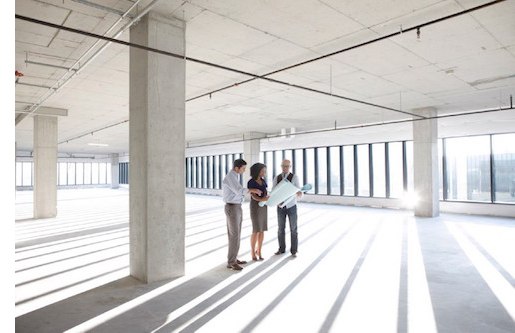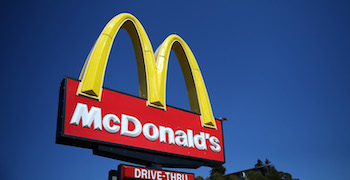As you probably already know, in February of 2016, commercial real estate sales plummeted. As a result, property owners are looking for ways they can increase their property values and desirability. While there are some well-known improvements you can make to your commercial property, here are three improvements you may have never considered.
1. Leasehold Improvements
 Before you even think about improving your commercial property, you should always consider the tax implications. Generally speaking, commercial property improvements fall into two separate categories: building improvements and leasehold improvements. And each type of improvement has different tax treatment.
Before you even think about improving your commercial property, you should always consider the tax implications. Generally speaking, commercial property improvements fall into two separate categories: building improvements and leasehold improvements. And each type of improvement has different tax treatment.
Now for those of you that don't know, a leasehold improvement is an improvement done to your commercial building but to the exclusive benefit of a specific tenant. For example, assume you have carpet in your office building, and your tenant wants laminate flooring. Well, if you replace the carpet with laminate flooring in that given unit, it's considered a leasehold improvement. However, if you do it for your whole office building…not so much.
You should know that leasehold improvements are extraordinarily complex when it comes to your taxes. In fact, between 2001 and 2015, the IRS changed their minds five different times on how they treat leasehold improvements, so it's important to go over them with a certified public accountant. You can read the IRS's 2015 improvement guidelines by clicking here.
But to summarize: The IRS has a three-prong test to determine if your improvement qualifies as a leasehold improvement and thus eligible for special consideration. First, the improvement must be done by either the landlord or the tenant of the space. Second, the improvement itself must be completely contained within the walls of the tenants space and must not impact or benefit any other tenant, any common areas in the building, or the structure of the building itself. And third, the property must have been in use for at least three years. So if it is so complicated, why do leasehold improvements? Because the benefits can be incredibly lucrative, read on and see for yourself.
As of the date of publication, you can depreciate the cost of a leasehold improvement over 15 straight years. So for example, if you spend $100,000 to fix up a space for a tenant, you can claim a depreciation deduction allowance of $6,667 per year for 15 years.
But performing a leasehold improvement has an even greater impact than you think… and it's not just in the tax benefits. Think of the goodwill you can create with your tenants by making leasehold improvements. The fact is that vacancy is the largest expense of a building… factor in tenant fit out and the leasing commissions and its downright cost prohibitive.
So by performing a leasehold improvement you keep your tenants happy, you increase your odds of lease renewals, and in certain markets probably even justify a rent increase. That means more money in your pocket, an increase in your property value, and an incredible tax write off. So you’re probably thinking, great. I love the idea of a leasehold improvement, but where do I even start? Keep reading and find out what one of the best improvements you can make is and how it easily qualifies as a leasehold improvement.
2. Doors
At this point, you are probably thinking; "What do you mean, doors?" Well, think about it. We already know that we want to make improvements to our commercial property, but we want to get them classified as a leasehold improvement. And doors fit the bill nicely, especially for apartment buildings.
You can replace the doors one at a time, and only on those units that are occupied, thus easily qualifying for leasehold status. Second, upgrading your doors can have a really dramatic effect on aesthetic appearances, and it increases property desirability. And let's not forget about the energy savings as well.
According to the United States Department of Energy, upgrading your doors to an ENERGY STAR rated door can boost energy efficiency by upwards of 20 percent, greatly reducing your heating and cooling costs. But lets not stop there, according to Remodeling Magazines "Cost vs. Value" 2015 report, the national average for upgrading to steel doors showed an incredible 101.8% return on investment.
So to recap, by upgrading your doors, you get the tax benefits of a leasehold improvement, the savings on your heating and cooling costs, and an increase in property value. Your tenants get a more comfortable working space and a more aesthetically pleasing entry to their spaces. Seems like a win-win situation.
3. Zoning Classification
Now this particular improvement won't be for everyone… and it's not technically an improvement to the commercial property itself. But, going through the process of changing the properties intended usage can have a huge impact on the value of the property.

Suppose for a minute that you have a warehouse zoned industrial in an up and coming neighborhood like Reno, Nevada's "Midtown" or South Carolinas Greenville. Instead of keeping the commercial property as a "warehouse," you can seek a zoning variance to convert that warehouse into an apartment building… or a retail strip mall. Of course, it goes without saying that this does not work on every building, but in many cases, it can be a home run.
Donald Trump is a master of rezoning properties. Just look what he has done with the iconic 1899 Washington post office tower. It was built in 1899, and used as Washington, D.C’s main post office until 1914. It was used primarily as an office building since then with what seemed to be lackluster performance. In 2013 however, the property owner signed a 60-year lease with the Trump Organization. The Trump Organization said it would develop the property into a luxury hotel with $200 million in renovations. The Trump Organization is set to pay $3 million a year in rent from the hotel’s opening date. By rezoning and making a large capital investment this property will generate an incredible revenue stream for its owners.
QuickLiquidity and its affiliates do not provide tax, legal or accounting advice. This material has been prepared for informational purposes only, and is not intended to provide, and should not be relied on for, tax, legal or accounting advice. You should consult your own tax, legal and accounting advisors before taking any action.




